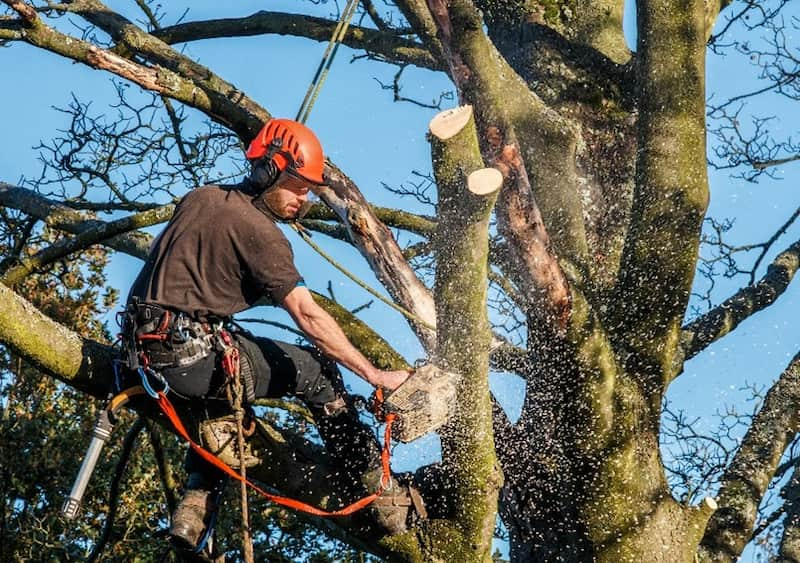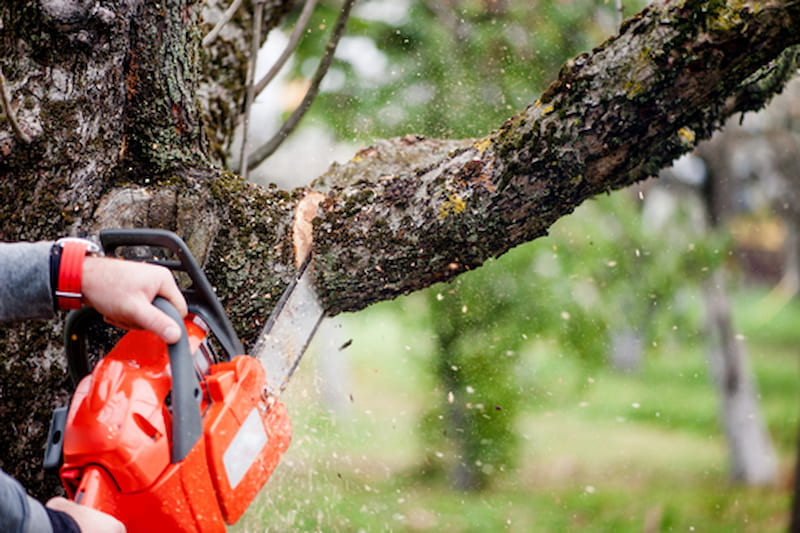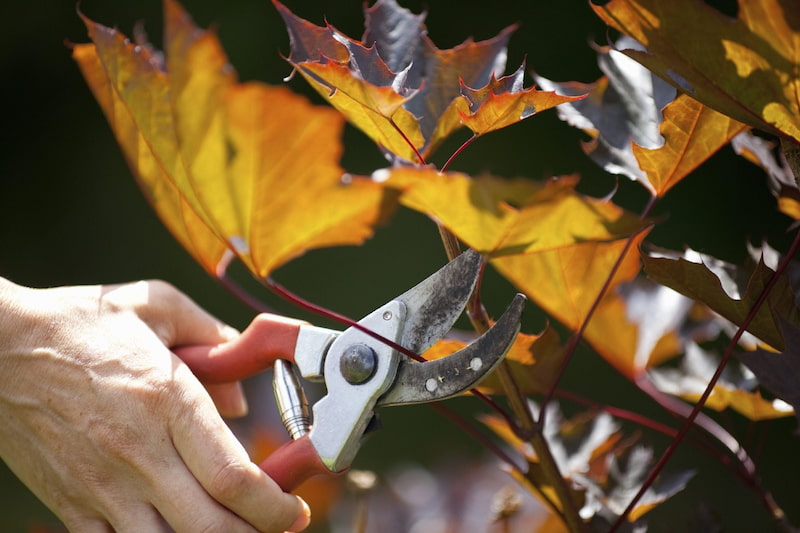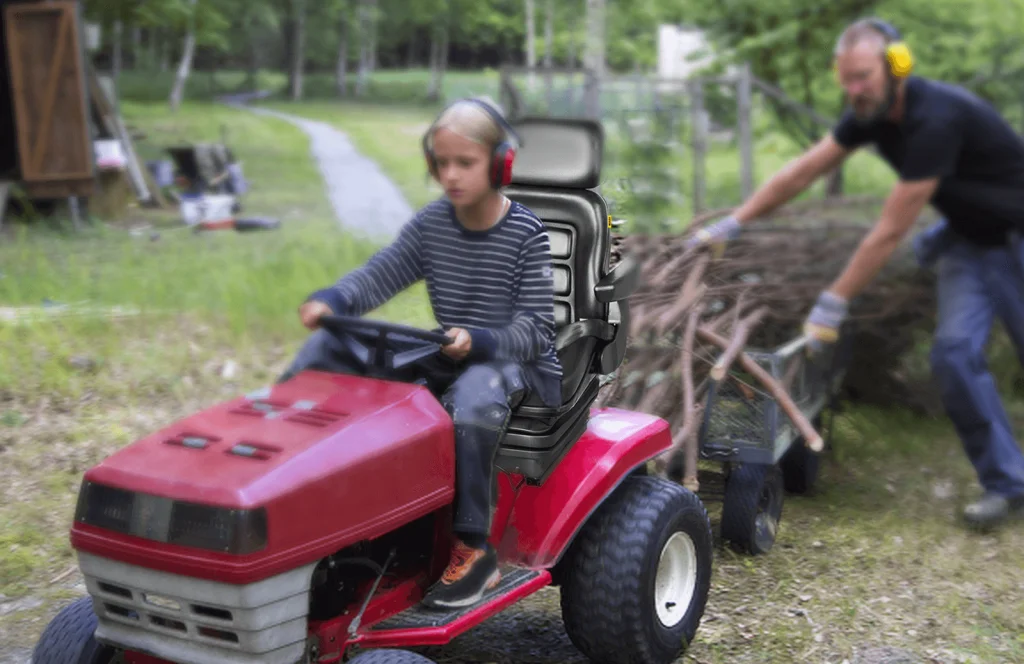Maple trees, celebrated for their majestic stature and vibrant fall leaves, are treasured across Asia, Europe, and North America. To keep their shape, health, and longevity, pruning becomes crucial, which can remove unhealthy branches to promote growth and safety.
In this article, we’ll explore the essentials of maple tree care, focusing on effective pruning maple tree techniques. We’ll provide clear steps on how to prune a maple tree, making it accessible for beginners. Read on to learn more!
Table of contents
Why Prune a Maple Tree?
Pruning a maple tree is more than just a gardening task; it’s essential for the care and maintenance of these magnificent trees. While trees in nature often flourish without our help, those we plant, like maples, need regular pruning for some reason:
Aesthetics
Pruning maple trees greatly enhances their aesthetic appeal. Removing unsightly branches not only improves the tree’s appearance but also helps in directing nutrients more effectively for balanced growth. This is especially important in the case of pruning large maple trees, where the structure plays a crucial role in overall beauty.
Health
When considering how to trim a maple tree, it’s vital to focus on health. Removing dead or dying branches is essential in reducing the risk of infections and pests. This step helps maintain the tree’s structural integrity and vitality.
Vigor
Pruning young maple trees, including varieties like the silver maple or the autumn blaze maple, is key to enhancing their vigor. By cutting away competing branches, these trees can use their resources more effectively, encouraging the growth of strong, healthy branches.
Disease Prevention
Pruning maple trees in summer, or during their appropriate pruning season, is an effective measure against diseases like Verticillium wilt.
Best Time to Trim Maple Trees
When we talk about pruning maple trees, it’s really about keeping them healthy and making sure they grow well. The best time to trim maple trees is usually when it’s still a bit chilly, like late winter or early spring. But, for the younger or sap-sensitive ones, like pruning a silver maple tree or pruning autumn blaze maple trees, doing it in around mid- to late-summer, is better.
That’s because maple trees produce a lot of sap, which is crucial for their health, acting like a nutrient transporter and healer. If you prune them too early in spring, they can lose a significant amount. So, for pruning maple tree branches, especially the smaller or younger trees, summer pruning is best to keep the sap intact and allow the tree to heal before winter.Top of Form
Preparation Before Pruning Maple Trees

Before embarking on the task of pruning maple trees, you need to prepare thoroughly to guarantee both safety and effectiveness in your tree-pruning venture. As a tree pruner, your preparation involves assembling the right outdoor hand tools and protective gear.
Personal Protective Equipment
When pruning maple trees, prioritizing your safety with the right personal protective equipment is crucial.
- Use sturdy gloves for hand protection and better grip on pruning tools.
- Wear safety goggles to protect your eyes from debris.
- Opt for non-slip shoes for stability, particularly on uneven ground or ladders.
- A hard hat is advisable for protection against debris from large trees.
- Long-sleeved shirts and pants provide additional protection from scratches.

After ensuring your personal safety with the right protective gear, the next step in preparing for maple tree pruning is to gather the appropriate tree pruner tools.
Pruning Tool
Having the right tools is essential for efficient and safe pruning.
- Hand Pruners: Ideal for smaller branches, typically less than an inch in diameter. They allow for precise cuts on young or thin branches.
- Loppers: These are perfect for slightly larger branches, typically up to two inches in diameter. Their long handles provide more leverage for thicker branches.
- Pruning Saw: For branches thicker than two inches, a pruning saw is necessary. It offers the strength and blade size needed for these tougher cuts.
- Pole Saw: For high and hard-to-reach branches, a pole saw is indispensable. One excellent option is the VEVOR Manual Pole Saw. This extendable tool can reach up to 27 feet, making it ideal for taller maple trees.

Isopropyl Alcohol
Isopropyl alcohol plays a crucial role in pruning. It’s used to sterilize your tools and de-sap your blades. Sterilization prevents the spread of disease from one cut to another. For effective sterilization, ensure the alcohol comprises at least 70% of the mixture.
How to Prune Maple Tree Branches?
Having prepared everything, it’s time to prune your maple tree. Pruning maple trees might sound like a big task, but it’s pretty straightforward once you know the basics. Let’s break it down into simple steps to make it easier.
- Removing Dead and Weak Branches: First off, get rid of any dead or weak branches. These are usually easy to spot since they don’t have many leaves. Cut them near where they meet a larger branch or the trunk, but don’t leave stubs hanging.
- Choosing and Cutting Around the Leader: The leader is like the main branch at the top of your maple tree. You want to make sure it stays the strongest, so trim away any branches that are competing with it. If there are a couple of strong branches near the top, pick the best one and trim the others back.
- Spacing Out Branches: Cut off the weaker ones, especially those that cross or touch. Aim to keep branches that stick out from the tree at a nice wide angle, like a “U” shape.
- Trimming Low-Hanging Branches: As your tree grows, it’s good to cut off some of the lower branches. This helps the tree look neater and encourages the trunk to grow straight and strong.
- Removing Suckers and Water Sprouts: These are the little sprouts that pop up at the base of the tree or along the trunk. They can take away energy from the main tree, so it’s best to cut them off.
- Balancing the Tree: Sometimes, some branches grow faster than others. If you see any that are getting too long, just trim them back so they’re even with the rest.
A couple more tips: When you’re cutting, make your cuts parallel to the trunk – this helps the tree heal better and prevents water from collecting and causing rot. And if you’re dealing with a really heavy branch, use the three-cut method to prevent damage to the tree. That’s where you make a couple of cuts to remove most of the branch’s weight before making the final cut near the trunk.
Maple Tree Pruning Techniques

When it comes to how to prune maple tree branches, start with young trees at about three years old. Prune a maple tree structurally every other year until they’re around ten. After that, the focus should be on removing dead or weak branches, but be careful with young trees – they need their leaves for food and growth.
For pruning large maple trees over ten years old, a less frequent pruning schedule is fine. However, if you spot dead branches at any time, go ahead with trimming maple tree branches immediately, regardless of the schedule.
Having noted this, let’s explore some general maple tree pruning techniques:
- First, a crucial rule in how to prune maple tree branchesis not to prune more than one-quarter of the tree’s leaves in one session.
- It’s better to prune from the top down, allowing you to gauge and avoid excessive removal.
- For taller trees, where you might consider pruning large maple treesand need a ladder, always work with someone for safety.
- Sterilize tools with isopropyl alcohol to prevent disease.
- Make parallel cuts to the trunk to avoid water accumulation and disease.
- Use loppers for branches under half-inch diameter; shorten larger branches appropriately.
- After removing a branch, cut the stub from below, so it barely protrudes from the collar, but avoid cutting the branch collar itself. It’s also advisable to avoid tree paint or wound dressing, as these can hinder the natural healing process.
- The three-cut method is ideal forcutting heavy branches.
- Make a cut one foot from the branch collar, going halfway through the branch.
- Then, make a complete cut a couple of inches further from the trunk.
- Finally, make your last cut just beyond the branch collar, sawing through until the branch snaps off under its weight.
FAQ
Let’s dive into some common questions you might have about maintaining your maple tree’s health and appearance:
How often Should I Prune My Maple Tree?
A good rule of thumb is once every few years. However, if you come across any dead or broken branches, it’s important to trim these maple tree branches immediately. This keeps the tree healthy and prevents any potential issues.
Can Maple Trees be Topped off?
No. Topping off maple trees, or cutting the upper portion of the tree, is generally not recommended. This practice can lead to structural weakness, increased susceptibility to pests and diseases, and sunburn.
How Close to Prune Tree Branches?
When pruning maple tree branches, one key aspect is not to cut too close to the trunk. Aim to leave about a quarter-inch near the trunk, known as the ‘branch collar.’ This small part plays a crucial role in helping the tree recover from the pruning. By preserving the branch collar while pruning a maple tree, you’re ensuring the tree’s health and well-being.
Conclusion
Proper pruning is key to the health and beauty of your maple trees. Armed with the techniques and safety tips provided, you can ensure their thriving growth. For top-notch pruning tools, check out VEVOR’s durable range, available at great value. These reliable tools are ideal for maintaining your trees, helping them stay vibrant and healthy for years. Remember, regular care and understanding of your tree’s needs are vital for its flourishing growth.





